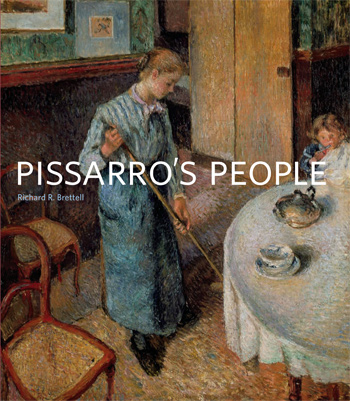
JUNE 12–OCTOBER 2, 2011
worker
Like many people interested in radical politics in nineteenth-century France, Pissarro found country life closer to his ideal of human equality than life in the city. He had great respect for the rural laborers he lived among, and he drew parallels between his own work and theirs; for him the physical labor of adding brushstroke after brushstroke to canvas was a deliberate, repetitive act not unlike hoeing, harvesting, and plowing the earth. Pissarro was interested in the nature of work and the dignity of labor, whether it be the agricultural work he witnessed in the fields around his home or the physical work involved in making art.

This was not Pissarro’s working palette but a special object commissioned by a Parisian restaurant owner. Pissarro distributed dabs of primary hues along the top and side of the panel in a decorative fashion then used these colors to create the vignette of field workers loading a wagon. This deliberate juxtaposition establishes a kind of visual parallel between the labor of the artist and that of the farm hands he so admired.
Click to download the exhibition brochure (PDF) from Pissarro's People.

Richly illustrated with more than 200 paintings, works on paper, and archival images, this compelling volume offers a definitive portrait of one of the most passionately political painters of the nineteenth century.

